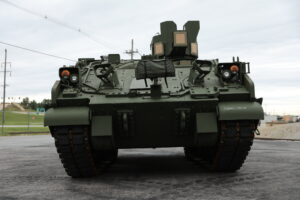
An Army official on Tuesday offered details on program reductions included in the service’s FY ‘22 budget request, to include stretching production of Joint Light Tactical Vehicles (JLTV) and the new Armored Multipurpose Vehicles (AMPV), while reiterating that future “night court” reform decisions will likely yield smaller returns in the coming years. “After three years of working through night court deep dive decisions, we’ve identified most of the places where we can potentially take a reduction or an elimination. Anything…

 By
By 











